Quick search
CTRL+K
Quick search
CTRL+K

Odessa at the Black Sea is also called the wonder of the South, and it is a unique meeting between Russian-Ukrainian culture and the French Mediterranean atmosphere. The relaxed atmosphere of the city with its many beautiful historic buildings, long and wide avenues and the location by the water makes a visit to Odessa a special experience. A walk along the famous Deribasovskaya street and a visit to the opera are just two of the many highlights.
Many stories are told of the poet Alexander Pushkin, who lived in Odessa in transition. Among other things, he should have planted a tree for every time he was captivated by one of the city’s beautiful women, which is perhaps why Odessa with trees everywhere today is perceived as a particularly green city in the central streets.
Among the many impressions of Odessa, the city’s churches, monasteries and museums are something special. Two cathedrals and the beautiful Saint Pantaleon Monastery are fine sights such as the city’s archaeological museum and museums for example, shipping and art.
Around the city there are many experiences. Boat trips on the Black Sea or a trip to the traces of past civilizations are good ideas if you can otherwise get yourself away from the Pearl of Catherine the Great, Odessa. The Transdniestr and Moldova neighboring areas are close to Odessa with hiking opportunities.
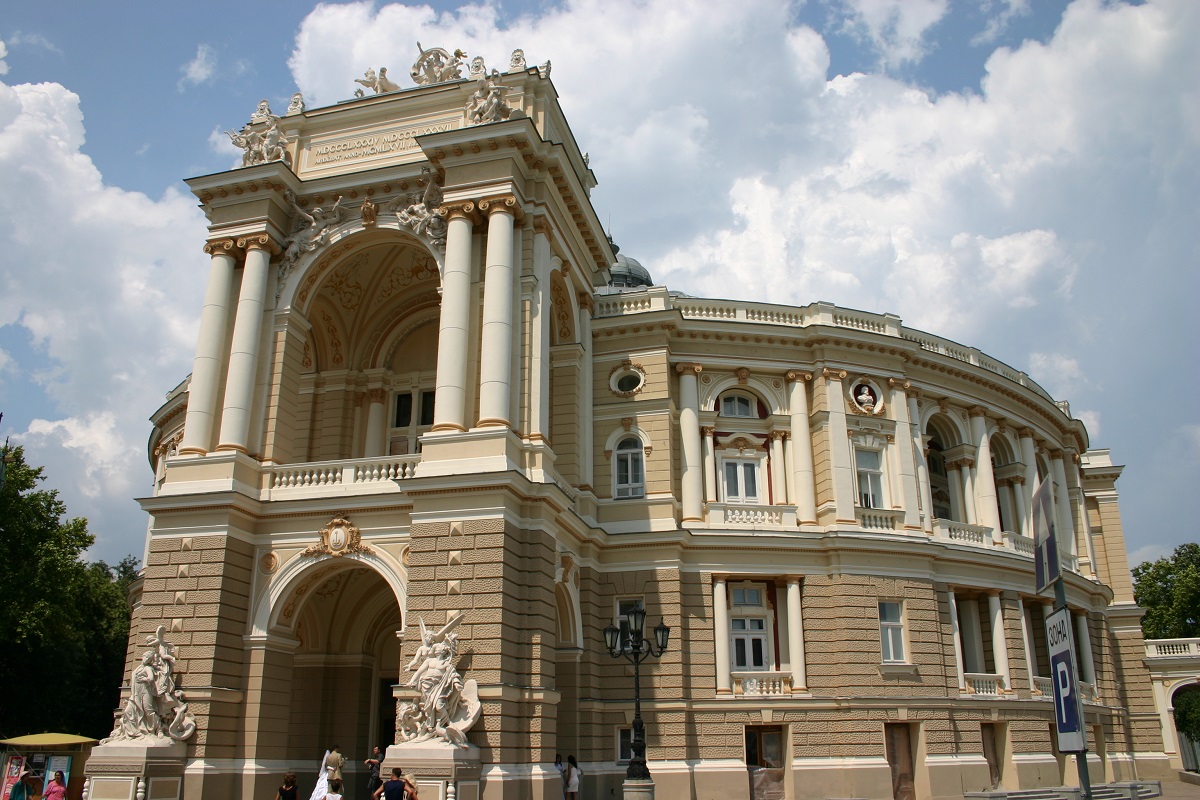
Odessa’s Opera and Ballet Theater is one of the city’s best-known and most beautiful buildings, and as Odessa’s oldest theater, it is one of the cultural flagships of the entire region.
The first opera house was built in 1809-1810, but it was destroyed by fire in 1873. Soon after, it was decided to start a collection for a reconstruction, which was inspired by the lines of Dresden’s Semperoper.
The Viennese architects Ferdinand Fellner and Hermann Helmer started work in 1883, and the current neo-baroque building was opened in 1887; as the first place in Odessa where electric light was installed.
Parts of the ornamentation are in Viennese Baroque with elements of the Italian Renaissance and French Rococo. In addition, here are sculpture groups of Greek mythology. The opera’s interior is in Louis XVI Rococo and among the finest in the world.
Large productions and artists have had their way in the theater over time; among others, the composer Peter Tchaikovsky has conducted here, and Anna Pavlova has danced ballet.
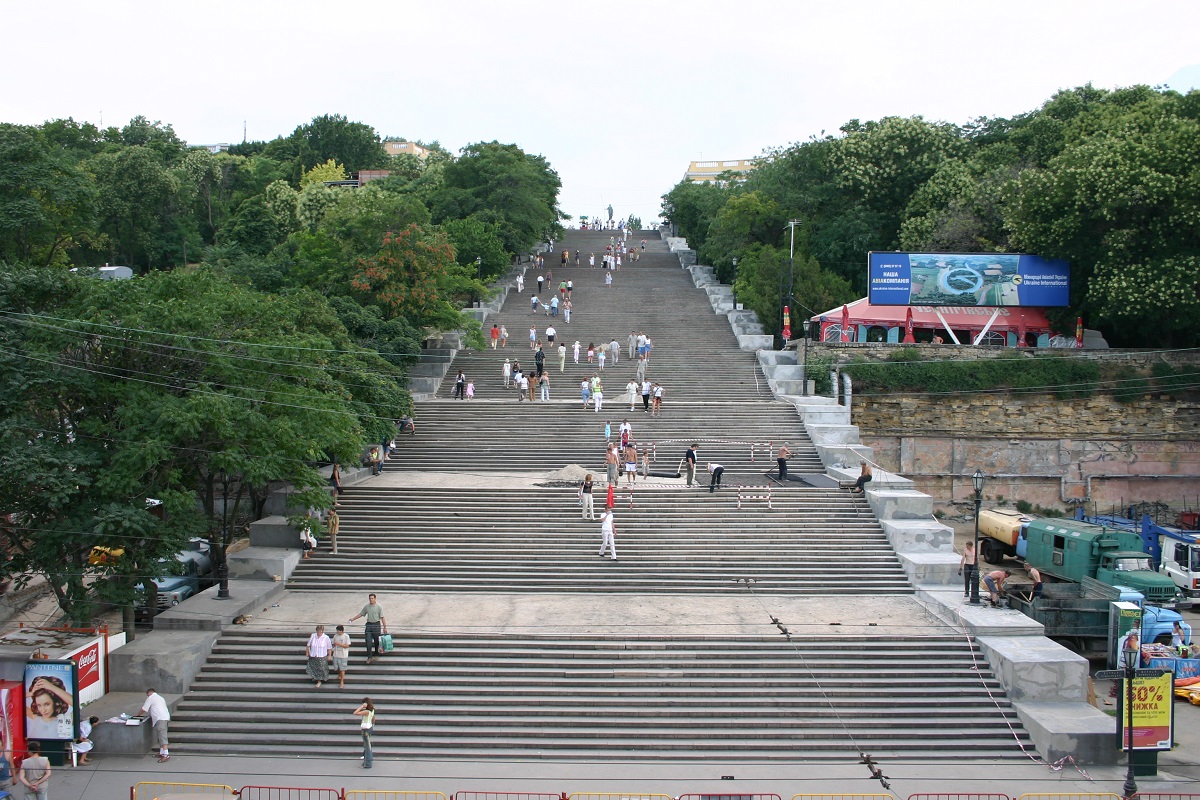
The Potemkim Stairs are Odessa’s landmark and are the city’s formal and grand gateway from the harbor to the higher-lying downtown.
The colossal stairs are designed with a narrower top than bottom, so that an optical contribution is created. The top step is 12.5 meters wide, the bottom 21.7 meters.
The level difference is 27 metres, and the length of the stairs is 142 metres. You can get a good overview of the stairs from below if you stand in the right-hand area facing the Port Terminal. From above, the steps of the stairs are invisible, you only see the intermediate plateaus. A funicular runs along the Potemkim steps, which you can possibly take.
The Potemkin stairs go from the water up to the elegant Primorski Boulevard promenade, and they were built 1837-1841 according to the drawings of the architect Franz Boffo from 1825. Originally there were 200 steps, but after an expansion of the port, the number has been reduced to 192.
The stairs are named after a scene in Sergei Eistenstein’s film, Battleship Potemkin/Броненосец «Потёмкин». In the film, there was a massacre where civilians were fired upon on the very grand stairs in Odessa on June 14, 1905. The shots came from the Russian Tsar’s marines who had come to the harbor with the Potemkin, which, despite the film’s name, was a battleship.
The Transfiguration Cathedral is Odessa’s main Orthodox church. It was founded by Catherine the Great, it wanted a church dedicated to the Transfiguration of Christ. Construction was started in 1795, but there was a complete standstill for a period until 1827 before it was completed.
The cathedral’s bell tower originally stood separately from the church itself, but with the 19th century extensions it was integrated into the rest of the building. The expansions also made the Transfiguration Cathedral, with a capacity of 9,000, one of the world’s largest Orthodox churches.
After the establishment of the Soviet Union, the cathedral was looted in 1919 and in 1932 it was closed. In 1936, the cathedral was demolished and blown away, but already during the area’s Romanian rule during World War II, there were thoughts of a reconstruction. Work began in 1999, and now the cathedral stands in its former glory.
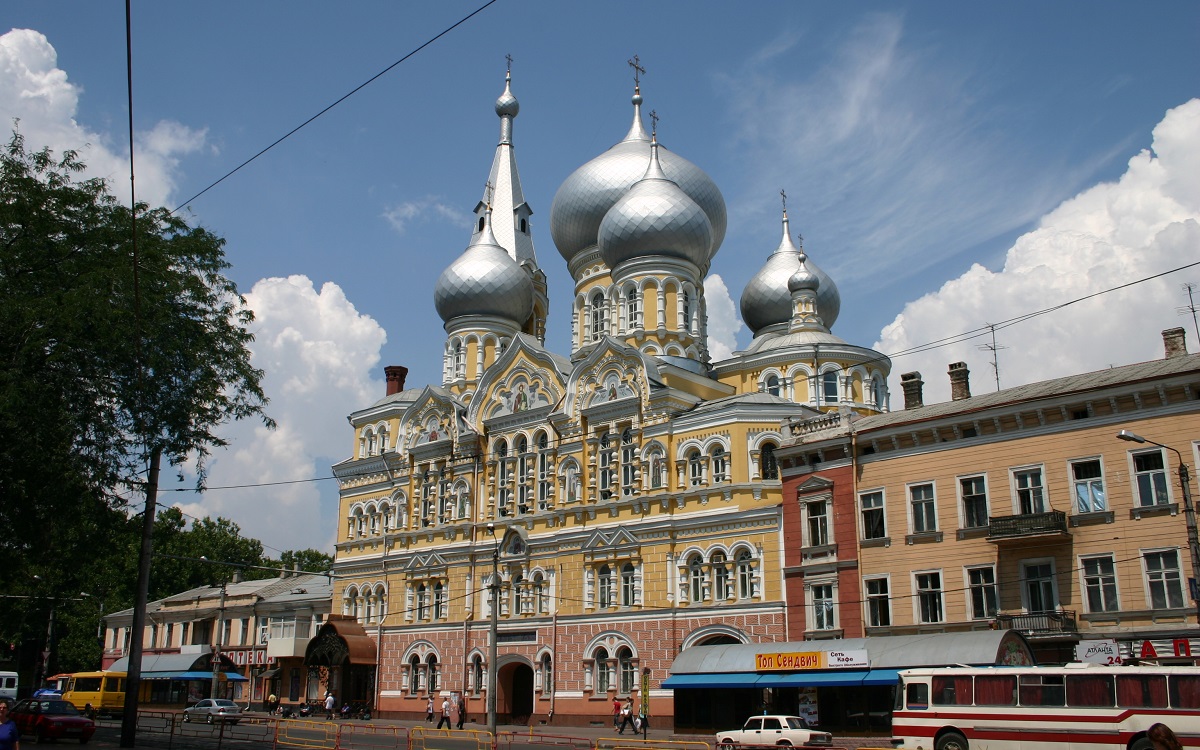
With its five silver-plated onion domes, Saint Pantaleon Monastery is one of the distinctive features of Odessa’s streetscape. The monastery was founded in 1893, and the beautiful church and the other buildings were built by the architect Prokopovich in the Muscovite-Russian style. The monastery buildings were completed and inaugurated in 1895.
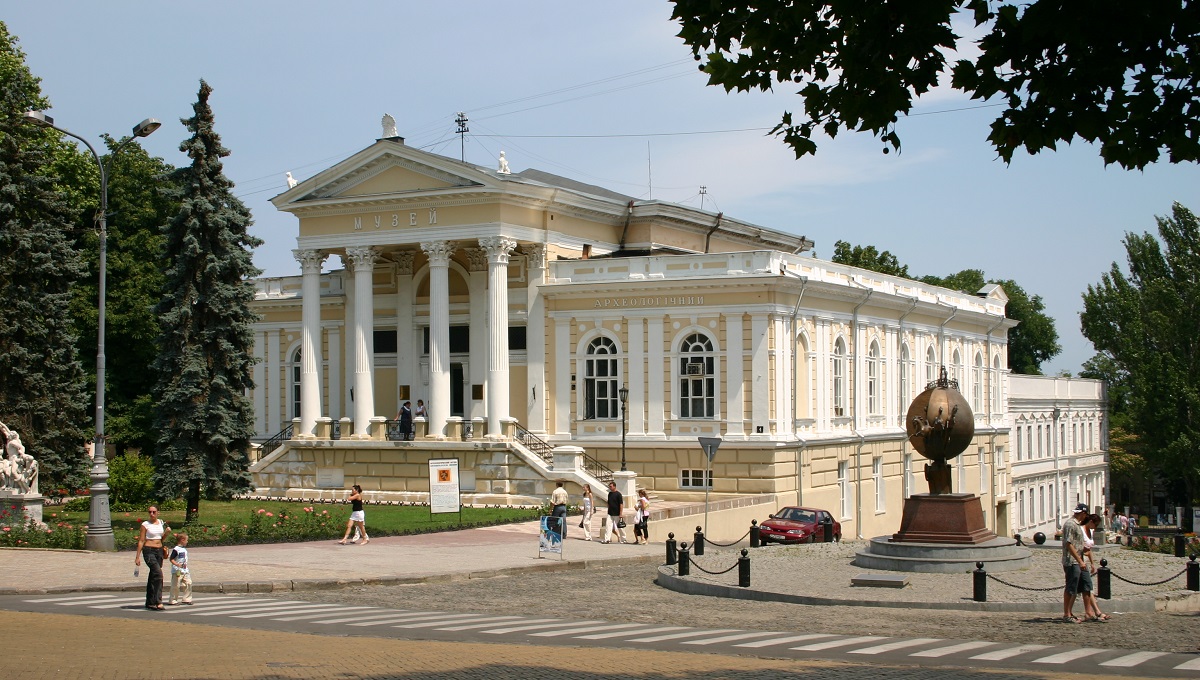
At the archaeological museum, you can see finds from Odessa and the area north of the Black Sea from prehistoric times to Greek colonization and the arrival of the Slavs in recent times. There is also an Egyptian collection here, which is Ukraine’s finest, and one of the museum’s highlights is the ancient gold and silver coins found in the area.
The museum building was built in 1883 under the direction of the architect Gonsiorovski; however, the museum had already been established in 1825. In front of the museum stands the sculpture Laokoon, which is a copy of Hagesandros’ work from the fourth century. The original is in the Vatican. The motif of the sculpture comes from Greek mythology’s description of the Battle of Troy. The priest Laocoon was a priest and fought with his two sons against snakes that ended up killing the three. It happened as Poseidon’s revenge for Laocoon wanting to warn against taking the Trojan horse into the city.
The large and elegant Vorontsov Mansion was built 1827-1830 by the architect Franz Boffo. It was erected as a residence for the Russian prince Mikhail Semyonovich Vorontsov, who was temporarily the governor-general of Odessa.
Vorontsov decided to build his magnificent mansion on the very spot where the city’s first governor, the Duke of Richelieu, had lived in his time. During its time as a residence palace, among other things, large balls were held in the building’s beautiful halls.
From 1906 the mansion was set up as an engineering school, and in 1936 the Soviet young pioneers took over the building, which was transformed into the PionerpPalace/Дворец пионеров. However, only part of the original mansion can be seen today; the so-called Orlov residential wing has been demolished.
The colonnade behind Vorontsov’s Mansion is a beautiful addition to the mansion, and the complex forms the end of the elegant Primorski Boulevard. From the colonnade there is a beautiful view of the Black Sea and the city’s harbour. The place is very popular with newlyweds and other romantics.
From the square in front of the colonnade, a footbridge goes west. The bridge is called Svigermorbroen, reportedly because of one of the city’s mayors, who lived to the east and wanted to save a long trip around the streets to reach the west side, and therefore had the bridge built in 1969.
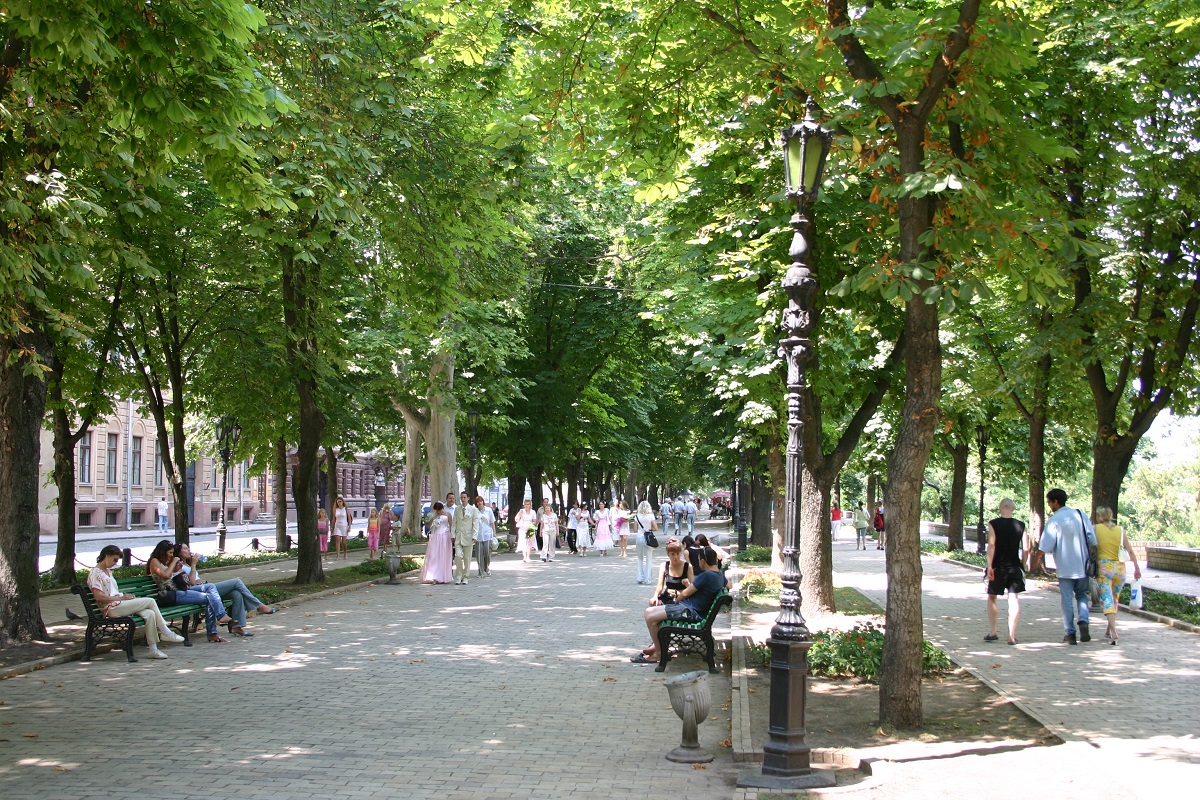
The beautiful Primorski Boulevard runs parallel to the Black Sea coast at Odessa’s port and is one of the city’s most popular places for a promenade. The boulevard is bounded to the southeast by the City Council building and to the northwest by Vorontsov’s Mansion.
Primorski Boulevard was established and mainly built up during Odessa’s so-called golden age, which lasted from the 1820s to the 1840s. Most of the buildings are built as welfare mansions.
In the central square (Pl. Yekaterininskaya/пл. Екатерининская) stands a statue of Armand-Emmanuel du Plessis, Duke of Richelieu, who was an immensely popular governor in Odessa’s early history. The statue was made by Martos in 1826, and it is a favorite place to have your photograph taken. As a backdrop to the statue are two rounded symmetrical buildings; they are listed in 1827-1830 and 1833 respectively as residences and Hotel Peterburgskaja/Гостиница «Петербургская». Today, the restaurant Boulevard/«Булваръ» is located in the hotel’s former building, where you can sit in the old setting.
Among other interesting buildings is number 11 of the boulevard, the distinguished Londonskaya Hotel/Гостиница Лондонская from 1828. Towards the north-west end of the boulevard you can enjoy a fine park that faces Vorontsov’s Mansion, which is also worth seeing.
Cathedral Square is one of the largest and most central squares in Odessa. As the name suggests, the city’s cathedral is located here, but to the north of the church building is a large and almost park-like area where there is a statue of the former governor-general Mikhail Vorontsov. They wanted to remove the statue in the 1930s, but the foundation is a monolith that had to be blown away, and they didn’t want to risk that. That is why Vorontsov is still standing here.
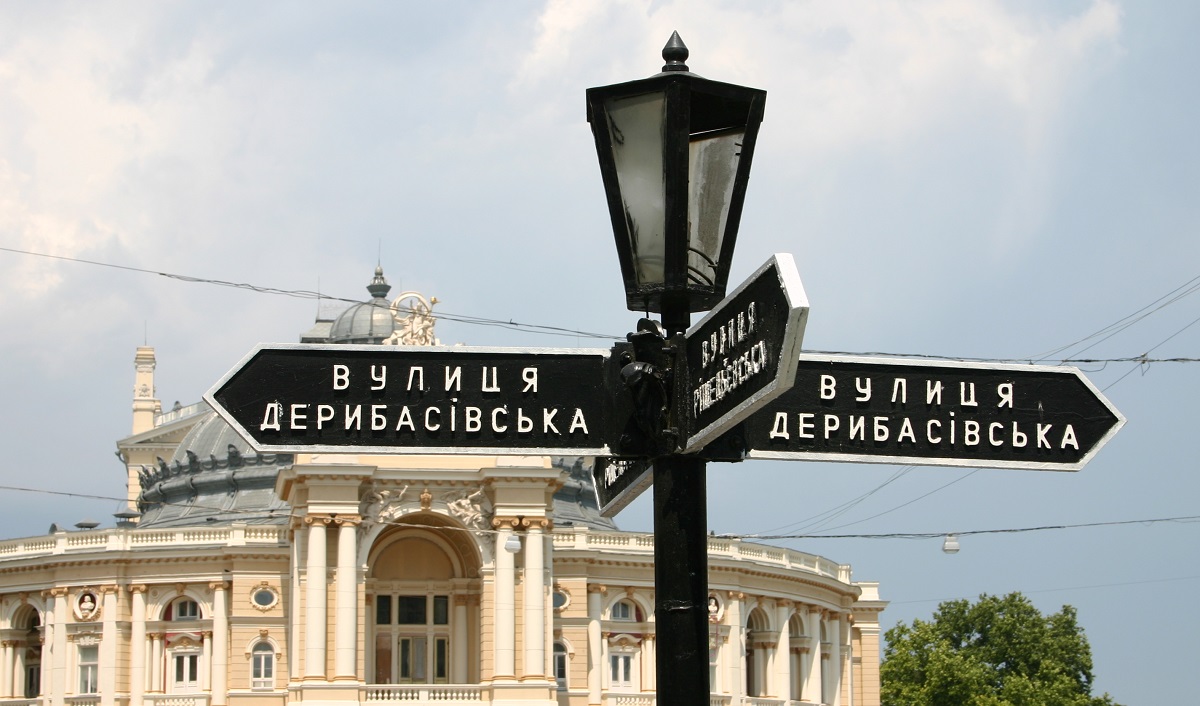
In the large Russian-speaking area, Deribasovskaja is one of the best-known streets, and a stroll along the elegant and cozy street is a must during a visit to the city. Among other things, the street gives access to the city park/Городской сад, which was donated to the city in 1806, and the Cathedral Park. The city park is established Felix de Ribas.
Among the street’s many beautiful buildings, you can see number 29, which the Pole Vlodek spearheaded the construction of in the years 1901-1904. It houses the large Bolshaya Moskovskaja Hotel/Большая Московская гостиница.
The name Deribasovskaya comes from the Russian admiral of Spanish ancestry, José de Ribas, whose name in Russia is Iosif Deribas. Deribas became a rear admiral in the Russian Black Sea Fleet after a successful storming of the fort and city of Izmail in 1790, in which he overcame the Turkish Ottomans.
At the corner of two of the city’s most prestigious streets, Preobrazhenskaya ul. and Deribasovskaya ul., the hotel and shopping arcade Passage are located. The ornate house with the covered arcades was built in 1899 by the Polish architect Vlodek. On a trip under the glass roof, you can see for yourself that one architecturally sophisticated detail surpasses the other.
With its prestigious location, Hotel Passage/Гостиница «Пассаж» (Preobrazhenskaya ul. 34) is one of the city’s classic and leading hotels.
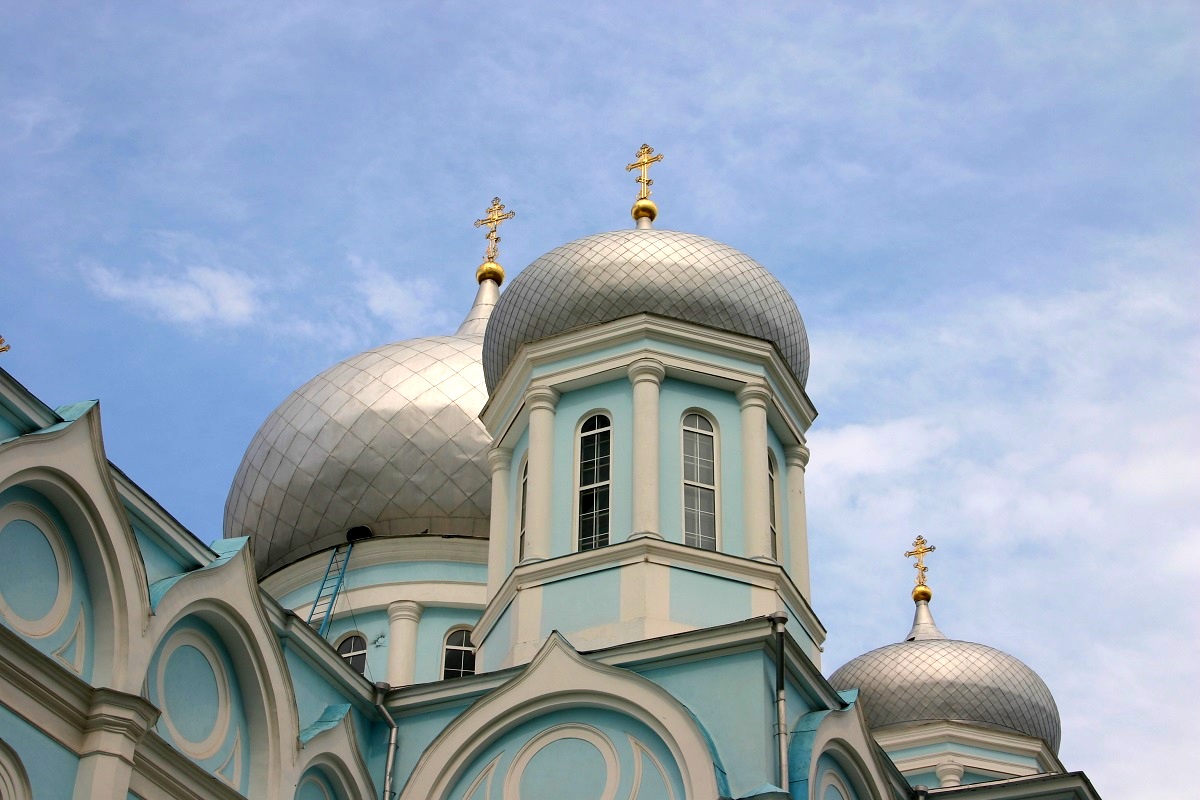
In the elegant Uspenski Cathedral, you can see the icon of the Virgin, said to be the patron of Odessa. The cathedral was built in 1868-1869 by the architect L. Otton.
The cathedral is particularly known for housing an icon of Odessa’s patron saint and protector, and the icon has been visited by the city’s population throughout time and still today when needed.
The large Shevchenko Park is one of Odessa’s many lovely recreational areas. The park is beautifully landscaped towards the Black Sea, and there are several monuments worth seeing. The park also houses the stadium of Odessa’s pride on the football pitches; Chernomorets.
At the western main entrance of the park (at the end of the street Sabanskij per./Сабанский пер.) stands a statue of Taras Shevchenko, Памятник Т.Г.Шевченко, after whom the park is named. The poet Shevchenko was born in Kiev in 1814 and died in Saint Petersburg in 1861; he is considered by many to be the Ukrainian national emblem. If you follow the path behind Shevchenko into the park, you will come to the monument to Tsar Alexander II/Памятник императору Александру II. South of the tsar monument is the park’s observatory/Обсерватория, built in 1870-1871, which belongs to the city’s university.
To the north-east of Shevchenko Park stands the 21-metre-high obelisk commemorating the Soviet navy’s heroes’ fight for Odessa during World War II. The monument is thus in honor of the unknown sailor. It is made of red granite with bronze inlays by the sculptor Narosjetski.
From the place where the obelisk stands, there is a fine view of the Black Sea, above which the park lies. From here there is also access to the city’s beaches.
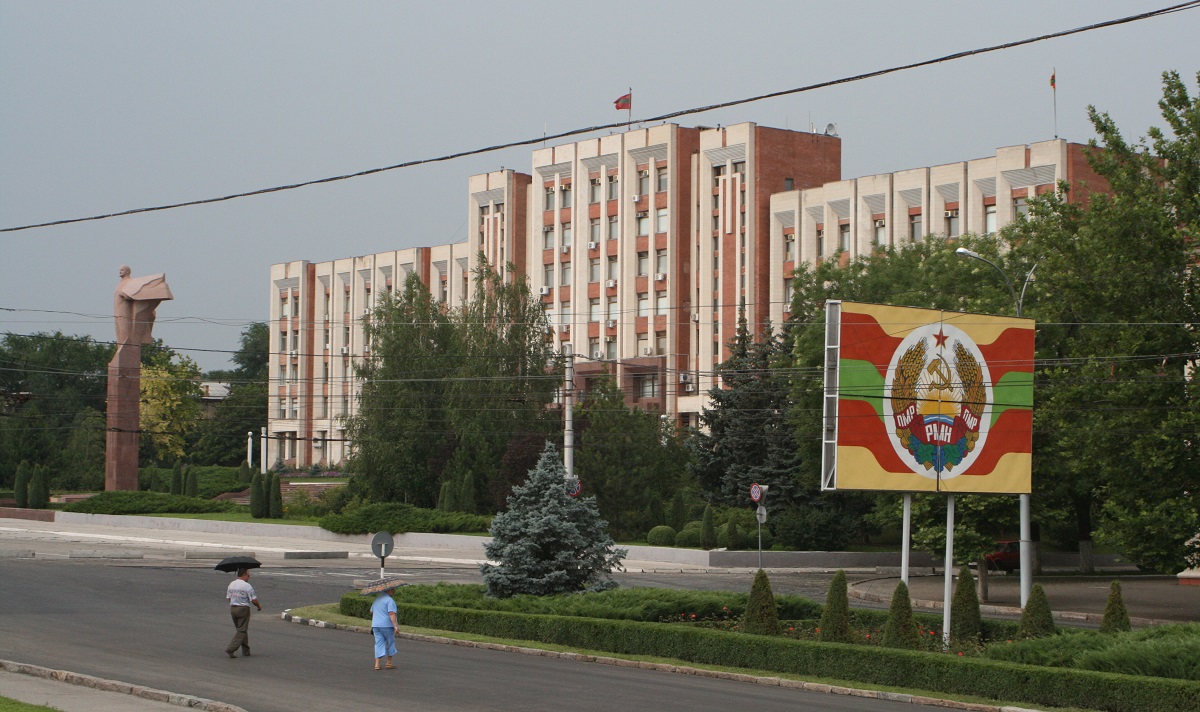
Tiraspol is a city beautifully situated on the banks of the River Dniester, and it de facto serves as the capital of Transnistria. Tiraspol’s modern history dates to 1792, when the city was founded by Alexander Suvorov, who was a Russian generalissimo. The city name Tiraspol is a combination of the two Greek words Tyras and polis, where Tyras is the old name for the Dniester and where polis means city.
In 1924, Tiraspol became part of the Moldavian Autonomous Soviet Socialist Republic, located on the east side of the Dniester, while most of present-day Moldova west of the Dniester was Romanian. In 1940, the Moldavian Soviet Socialist Republic became a separate republic within the Soviet Union, and in 1991 the republic declared independence. Soon after, Transnistria declared independence from Moldova, and Tiraspol became the capital of the Pridnestrovian Moldavian Republic.
Belgorod-Dnestrovsky is one of Ukraine’s worth-seeing historical cities. In the 5th century, visitors from Greek Miletus founded the colony Tyras/Τύρας on the city’s current location. During the following centuries, the city belonged both to Rome and Byzantium under the names Album Castrum and Asperon, but slowly Slavic people pushed towards the city, which in the 9th century was a Slavic trading city.
In 1484, the Turkish Ottomans captured the city from the Moldavian lords, and in 1503 they renamed it Akkerman. Russia overcame the Turkish defenses several times in the 18th-19th centuries, and the city became part of Russia at the Peace of Bucharest in 1812. The city’s next name was Cetatea Albă, which, however, only came during the city’s time in the Kingdom of Romania from 1918. Since 1944 the city is known by the Russian name Belgorod-Dnestrovsky, which means “the white city on the Dniester”.
The absolute highlight of the city is Akkerman Fort, but a place to start to learn more about the city’s history is at the History Museum (ul. Pushkinskaya 19/ул. Пушкинская 19). Akkerman Fort lies beautifully and majestically by the water and is quite well preserved from its Turkish era with towers, walls and a minaret. You can also see the citadel from the time under the city-state of Genoa in the 14th century, and the fort houses an interesting museum about the history of the place.
Immediately east of Akkerman Fort are the ruins of the Greek colony from Miletus, Tyras/Τύρας, which was founded in the 5th century. No buildings are well-preserved, but the area can be viewed to form an impression, and then it is beautifully situated by the water.
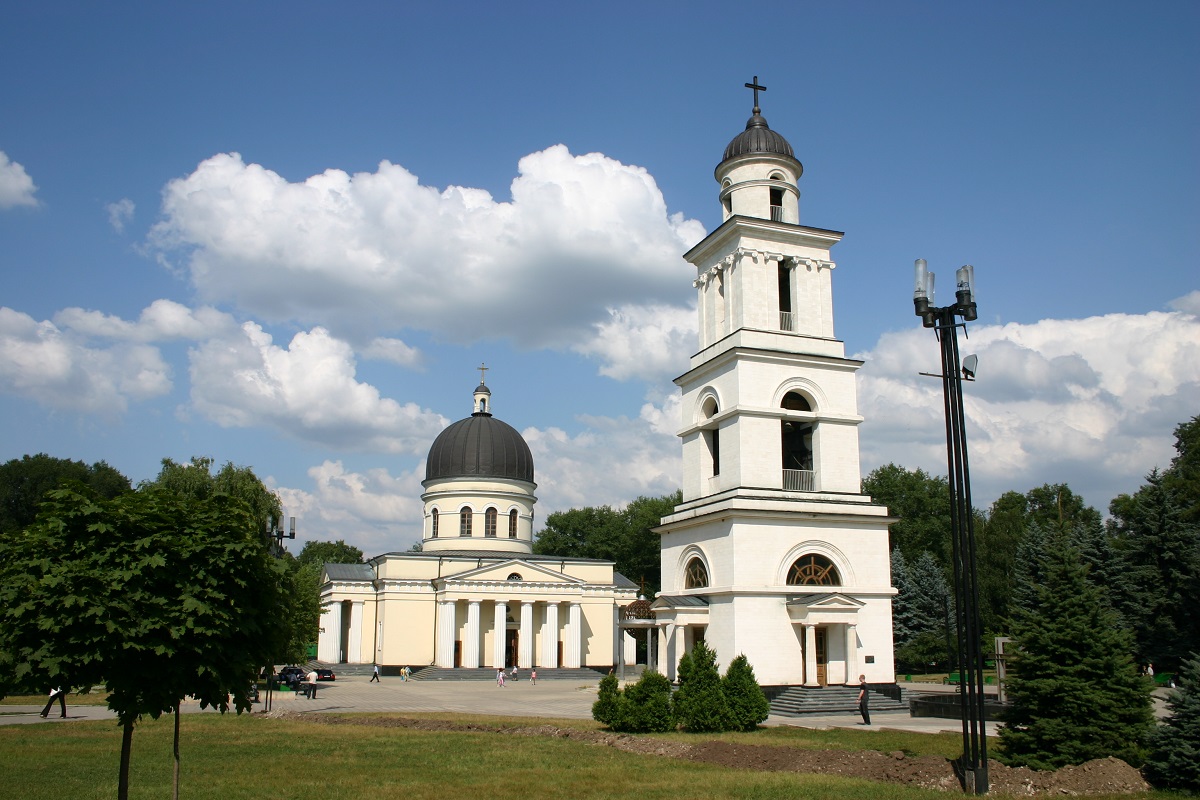
Chişinău is the capital of the Republic of Moldova and with approximately 600,000 the largest city in the country. The city was founded in 1438 as a monastic town, and in the 16th century it became part of the Ottoman Empire as the rest of the Moldovan territory. In 1812 it became part of Tsarist Russia.
A large-scale city plan was launched in 1834, and work on wide boulevards, churches and other public buildings was commissioned. After the Russian Revolution in 1917, the Moldovan territory seceded from Russia and from 1918 became part of the Kingdom of Romania.
Izmail is located on the north bank of the Danube river with a view to Romania on the other bank. Izmail is the largest Ukrainian port city along the river and is thus the regional center.
Throughout history, the city has been influenced by, among others, Turkey and Romania, and this is clearly seen in the streetscape, where there are ruins and preserved buildings from the past many centuries.
Historically, merchants from the city-state of Genoa built a fort in Izmail in the 12th century. In the 14th century, the area came under Wallachia, which was ruled by the Bessarabian dynasty. In the 14th century, the city came under Moldavia and from 1484 under the Turkish Ottomans. As such, the city was also referred to as Izmailiye, named after the Ottoman Grand Vizier Izmail.
Today you can see the ruins of the Genoese fort, Izmail Fort/Крепость Измаил (Krepostnaya ul. 1/Крепостная ул. 1), which entered the history books several times at the end of the 18th century. In 1770, Russian troops occupied the site, and this entailed a strong fortification, so that the Ottomans did not think it possible to repeat it.
December 22, 1790 became the day when the Russian military leader, Alexandr Suvorov, attacked and it ended with the now legendary storm against the Turks. The Russians took the fort, which was one of the strongest in Europe, in just 10 hours. In the city today you can see an equestrian statue of Suvorov as a reminder of the event.
However, the Ottomans got the city and the area back for a time. A new Russian conquest in 1809 contributed to Izmail and the rest of Bessarabia becoming part of Russia from 1812. Several of the city’s noteworthy Russian-style buildings date from the decades following, when the city was rebuilt; not least several churches are worth seeing; eg the centrally located Pokrov Cathedral/Покровский кадеральный собор (Komsomolsky Skver/Комсомольсий сквер) with its colonnade à la Kazan Cathedral in Saint Petersburg.
The town’s Little Mosque/Мечеть (Krepostnaya ul. 1a/Крепостная ул. 1а) from the 1400s-1500s is one of the few buildings that can still be seen from the city’s Ottoman era. The mosque was converted into a church in 1810, and today it is a museum for the storm on the fort in 1790. Among other things, there is a large diorama here.
ul. Balkovskaya 88/ул. Балковская 88
Deribasovskaya ul./Дерибасовская ул.
Pushkinskaya 72/ул. Пушкинская 72
Privoznaya ul. 14/Привозная ул. 14
odessaprivoz.narod.ru
Deribasovskaya ul./Дерибасовская ул., Pushkinskaya/ул. Пушкинская
Tsirk/Цирк
ul. Koblevskaya 25/ул. Коблевская 25
odessa-cirkus.narod.ru
Odeskiy Oblastnoy Teatr Kukol/Одесский Областной театр кукол
ul. Pastera 15/ул. Пастера 15
puppets.odessa.net
Dom Klounov/Дом Клоунов
ul. Olgievskaya 23/ул. Ольгиевская 23
Delfinariy & Oceanarium Nemo/Дельфинарий & Океанариум Немо
Pljazh Lanzheron 25/пляж Ланжерон 25
delfinariy.od.ua
Pirogovskaya/Пироговская
Akvapark Poseidon/Аквапарк Посейдон
Chabanka, Chernomorskoe/Чабанка, Черноморское
Teatr Yunogo eritelja/Театр Юного зрителя
ul. Grecheskaya 50/ул. Греческая 50
Odesskiy Zoopark/Одесский Зоопарк
ul. Novosjtepnoy Ryad/ул. Новощепной Ряд 25
The area around present-day Odessa has been inhabited for millennia, and the local peoples are mentioned, among others, in Homer’s Odyssey. In the centuries before the birth of Christ, Greeks settled in the region, and remains of these colonies have been found in today’s urban center around, among others, Primorski Boulevard.
Over the next millennium, many tribes came to the area that belonged to the Roman Empire. Goths and females were other folk that characterized the troubled and politically unstable time.
In 1237, Mongol armies led by Batu Khan arrived, and within a two-year period the Mongol hordes had overcome the ruling Polovtsians. The forerunner to Odessa, Hacıbey, was founded in 1240 under the Crimean Tatar Hacı I Giray.
The Mongols’ rule was weakened in the early 1300s, and the Crimean Tatars increased their trade in the territory that had come under the rule of the Grand Duchy of Lithuania. At that time, the sparse urban settlement was called Chadžibėjus. Under Prince Vitovt, the Lithuanians built a fort that was the precursor to the later Khadjibej fortification of the Turks.
Turkish armies are believed to have conquered the region northwest of the Black Sea from about 1480, and they came together with the created Crimean Khanates to dominate for centuries. In the sparsely inhabited area, the Turkish government tried to populate through subsidies to settlers. This led to an immigration of Turks, but also Russians, Ukrainians and Moldavians.
In 1765, the Turks expanded the Khadjibej fort as part of growing tensions between Russia and the Turkish Ottoman Empire. The fort was now named Eni-Dunya, meaning the New World.
The Russo-Turkish war began in 1769. Despite repeated military victories, the Russians were unable to occupy the fort and thereby the city until 1774. Khadjibej, which housed about 200 inhabitants, fell into Turkish hands again until 1789, when Russia once again conquered the fort. and the city, which in 1791 officially became part of the Russian Empire.
The new city, Odessa, was founded in 1794 at the decision of Catherine the Great, whose army had victoriously conquered the land towards the Black Sea. Shortly after the city’s establishment, more than 2,000 inhabitants lived here.
The city’s growth over the next hundred years was virtually without anywhere else in Europe. Commercial roads had crossed the site for millennia, so success was given in advance and major construction work was initiated.
In a few years the population had risen to 9,000, and in 1803 the French Duke became Richelieu Odessa’s first governor, and it was to be the start of the city’s golden age of growth and prosperity. Quickly, Odessa came to be called the Wonder of the South, whose northern counterpart is Saint Petersburg. The city became one of the most important cities of the empire with its harbor and its positive development.
With its progressive laws, Odessa was a sanctuary in Russia that attracted many creative thinking people, and it created almost constant momentum through initiatives in, among others, architecture, commerce, research and culture. Compared to other Russian cities, Odessa was highly integrated with Europe, and this can be seen in the very European-inspired architectural art that exists today. One of the cultural figures of the time, Alexander Pushkin, spent a year in Odessa, which he greatly appreciated.
The constant growth of the city was temporarily halted with the Crimean War in 1853-1856. The British warship The Tiger attacked the city in 1854, but Odessa resisted and overcame the attack. The Tiger was lost near a cannon that can be seen in the city today.
After the Crimean War, Odessa’s growth continued, and the city was, among other things, a significant trade center. In the 1860s, the railway came to the city, which was linked to both Kiev, Kharkov and Iasi.
During the revolutionary mood of 1905, the legendary cruiser Potemkin sailed into Odessa’s port under the communist red tab. The event was later immortalized through Sergei Eisenstein’s film of the same name as the ship.
After the Russian Revolution in 1917, Odessa was captured by both French and Englishmen as well as by the white and red Russian army. In 1920, Odessa was finally captured by the Communist Red Army, and the city later became part of the Ukrainian Soviet Republic.
During World War II, Odessa’s people fought long and courageously against the attacking forces, and after the end of the war, Odessa was made a Soviet hero city for its great efforts and significant losses.
Throughout the 1960s and 1970s, Odessa grew rapidly with many new residential areas and a large influx of large parts of the Soviet Union. As throughout its history, the city also grew here because of its favorable commercial location, and now the lovely climate of the Black Sea also attracted more and more tourists.
Today, Odessa is Ukraine’s largest port city and is home to more than a million inhabitants and an architecture and atmosphere that is nowhere else in the former great Russian empire.

Odessa, Ukraine
Overview of Odessa
Odessa at the Black Sea is also called the wonder of the South, and it is a unique meeting between Russian-Ukrainian culture and the French Mediterranean atmosphere. The relaxed atmosphere of the city with its many beautiful historic buildings, long and wide avenues and the location by the water makes a visit to Odessa a special experience. A walk along the famous Deribasovskaya street and a visit to the opera are just two of the many highlights.
Many stories are told of the poet Alexander Pushkin, who lived in Odessa in transition. Among other things, he should have planted a tree for every time he was captivated by one of the city’s beautiful women, which is perhaps why Odessa with trees everywhere today is perceived as a particularly green city in the central streets.
About the Whitehorse travel guide
Contents: Tours in the city + tours in the surrounding area
Published: Released soon
Author: Stig Albeck
Publisher: Vamados.com
Language: English
About the travel guide
The Whitehorse travel guide gives you an overview of the sights and activities of the Canadian city. Read about top sights and other sights, and get a tour guide with tour suggestions and detailed descriptions of all the city’s most important churches, monuments, mansions, museums, etc.
Whitehorse is waiting for you, and at vamados.com you can also find cheap flights and great deals on hotels for your trip. You just select your travel dates and then you get flight and accommodation suggestions in and around the city.
Read more about Whitehorse and Canada
Canada Travel Guide: https://vamados.com/canada
City tourism: https://visitwhite-horse.ca
Main Page: https://www.vamados.com/
Buy the travel guide
Click the “Add to Cart” button to purchase the travel guide. After that you will come to the payment, where you enter the purchase and payment information. Upon payment of the travel guide, you will immediately receive a receipt with a link to download your purchase. You can download the travel guide immediately or use the download link in the email later.
Use the travel guide
When you buy the travel guide to Whitehorse you get the book online so you can have it on your phone, tablet or computer – and of course you can choose to print it. Use the maps and tour suggestions and you will have a good and content-rich journey.


At the archaeological museum, you can see finds from Odessa and the area north of the Black Sea from prehistoric times to Greek colonization and the arrival of the Slavs in recent times. There is also an Egyptian collection here, which is Ukraine’s finest, and one of the museum’s highlights is the ancient gold and silver coins found in the area.
The museum building was built in 1883 under the direction of the architect Gonsiorovski; however, the museum had already been established in 1825. In front of the museum stands the sculpture Laokoon, which is a copy of Hagesandros’ work from the fourth century. The original is in the Vatican. The motif of the sculpture comes from Greek mythology’s description of the Battle of Troy. The priest Laocoon was a priest and fought with his two sons against snakes that ended up killing the three. It happened as Poseidon’s revenge for Laocoon wanting to warn against taking the Trojan horse into the city.
The large and elegant Vorontsov Mansion was built 1827-1830 by the architect Franz Boffo. It was erected as a residence for the Russian prince Mikhail Semyonovich Vorontsov, who was temporarily the governor-general of Odessa.
Vorontsov decided to build his magnificent mansion on the very spot where the city’s first governor, the Duke of Richelieu, had lived in his time. During its time as a residence palace, among other things, large balls were held in the building’s beautiful halls.
From 1906 the mansion was set up as an engineering school, and in 1936 the Soviet young pioneers took over the building, which was transformed into the PionerpPalace/Дворец пионеров. However, only part of the original mansion can be seen today; the so-called Orlov residential wing has been demolished.
The colonnade behind Vorontsov’s Mansion is a beautiful addition to the mansion, and the complex forms the end of the elegant Primorski Boulevard. From the colonnade there is a beautiful view of the Black Sea and the city’s harbour. The place is very popular with newlyweds and other romantics.
From the square in front of the colonnade, a footbridge goes west. The bridge is called Svigermorbroen, reportedly because of one of the city’s mayors, who lived to the east and wanted to save a long trip around the streets to reach the west side, and therefore had the bridge built in 1969.

The beautiful Primorski Boulevard runs parallel to the Black Sea coast at Odessa’s port and is one of the city’s most popular places for a promenade. The boulevard is bounded to the southeast by the City Council building and to the northwest by Vorontsov’s Mansion.
Primorski Boulevard was established and mainly built up during Odessa’s so-called golden age, which lasted from the 1820s to the 1840s. Most of the buildings are built as welfare mansions.
In the central square (Pl. Yekaterininskaya/пл. Екатерининская) stands a statue of Armand-Emmanuel du Plessis, Duke of Richelieu, who was an immensely popular governor in Odessa’s early history. The statue was made by Martos in 1826, and it is a favorite place to have your photograph taken. As a backdrop to the statue are two rounded symmetrical buildings; they are listed in 1827-1830 and 1833 respectively as residences and Hotel Peterburgskaja/Гостиница «Петербургская». Today, the restaurant Boulevard/«Булваръ» is located in the hotel’s former building, where you can sit in the old setting.
Among other interesting buildings is number 11 of the boulevard, the distinguished Londonskaya Hotel/Гостиница Лондонская from 1828. Towards the north-west end of the boulevard you can enjoy a fine park that faces Vorontsov’s Mansion, which is also worth seeing.
Cathedral Square is one of the largest and most central squares in Odessa. As the name suggests, the city’s cathedral is located here, but to the north of the church building is a large and almost park-like area where there is a statue of the former governor-general Mikhail Vorontsov. They wanted to remove the statue in the 1930s, but the foundation is a monolith that had to be blown away, and they didn’t want to risk that. That is why Vorontsov is still standing here.

In the large Russian-speaking area, Deribasovskaja is one of the best-known streets, and a stroll along the elegant and cozy street is a must during a visit to the city. Among other things, the street gives access to the city park/Городской сад, which was donated to the city in 1806, and the Cathedral Park. The city park is established Felix de Ribas.
Among the street’s many beautiful buildings, you can see number 29, which the Pole Vlodek spearheaded the construction of in the years 1901-1904. It houses the large Bolshaya Moskovskaja Hotel/Большая Московская гостиница.
The name Deribasovskaya comes from the Russian admiral of Spanish ancestry, José de Ribas, whose name in Russia is Iosif Deribas. Deribas became a rear admiral in the Russian Black Sea Fleet after a successful storming of the fort and city of Izmail in 1790, in which he overcame the Turkish Ottomans.
At the corner of two of the city’s most prestigious streets, Preobrazhenskaya ul. and Deribasovskaya ul., the hotel and shopping arcade Passage are located. The ornate house with the covered arcades was built in 1899 by the Polish architect Vlodek. On a trip under the glass roof, you can see for yourself that one architecturally sophisticated detail surpasses the other.
With its prestigious location, Hotel Passage/Гостиница «Пассаж» (Preobrazhenskaya ul. 34) is one of the city’s classic and leading hotels.

In the elegant Uspenski Cathedral, you can see the icon of the Virgin, said to be the patron of Odessa. The cathedral was built in 1868-1869 by the architect L. Otton.
The cathedral is particularly known for housing an icon of Odessa’s patron saint and protector, and the icon has been visited by the city’s population throughout time and still today when needed.
The large Shevchenko Park is one of Odessa’s many lovely recreational areas. The park is beautifully landscaped towards the Black Sea, and there are several monuments worth seeing. The park also houses the stadium of Odessa’s pride on the football pitches; Chernomorets.
At the western main entrance of the park (at the end of the street Sabanskij per./Сабанский пер.) stands a statue of Taras Shevchenko, Памятник Т.Г.Шевченко, after whom the park is named. The poet Shevchenko was born in Kiev in 1814 and died in Saint Petersburg in 1861; he is considered by many to be the Ukrainian national emblem. If you follow the path behind Shevchenko into the park, you will come to the monument to Tsar Alexander II/Памятник императору Александру II. South of the tsar monument is the park’s observatory/Обсерватория, built in 1870-1871, which belongs to the city’s university.
To the north-east of Shevchenko Park stands the 21-metre-high obelisk commemorating the Soviet navy’s heroes’ fight for Odessa during World War II. The monument is thus in honor of the unknown sailor. It is made of red granite with bronze inlays by the sculptor Narosjetski.
From the place where the obelisk stands, there is a fine view of the Black Sea, above which the park lies. From here there is also access to the city’s beaches.
Similar to Odessa Travel Guide
